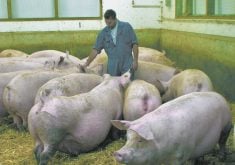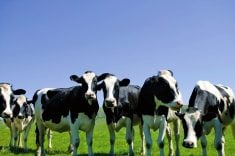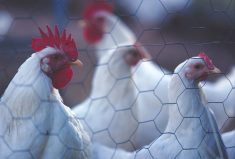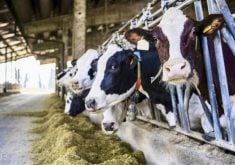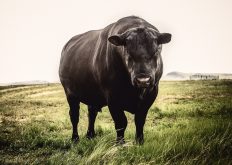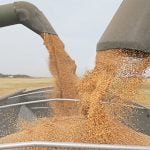Glacier FarmMedia – Livestock producers inadvertently put themselves and others in harm’s way by failing to realize the dangers of bottle-fed bull calves when those calves grow into behemoths.
Dr. Joe Stookey, professor emeritus at the Western College of Veterinary Medicine in Saskatoon, said he has seen the dangers many times in the past.
Why it matters: Bottle feeding bull calves can cause them to imprint on humans, which can become dangerous once the animal reaches sexual maturity.
Read Also
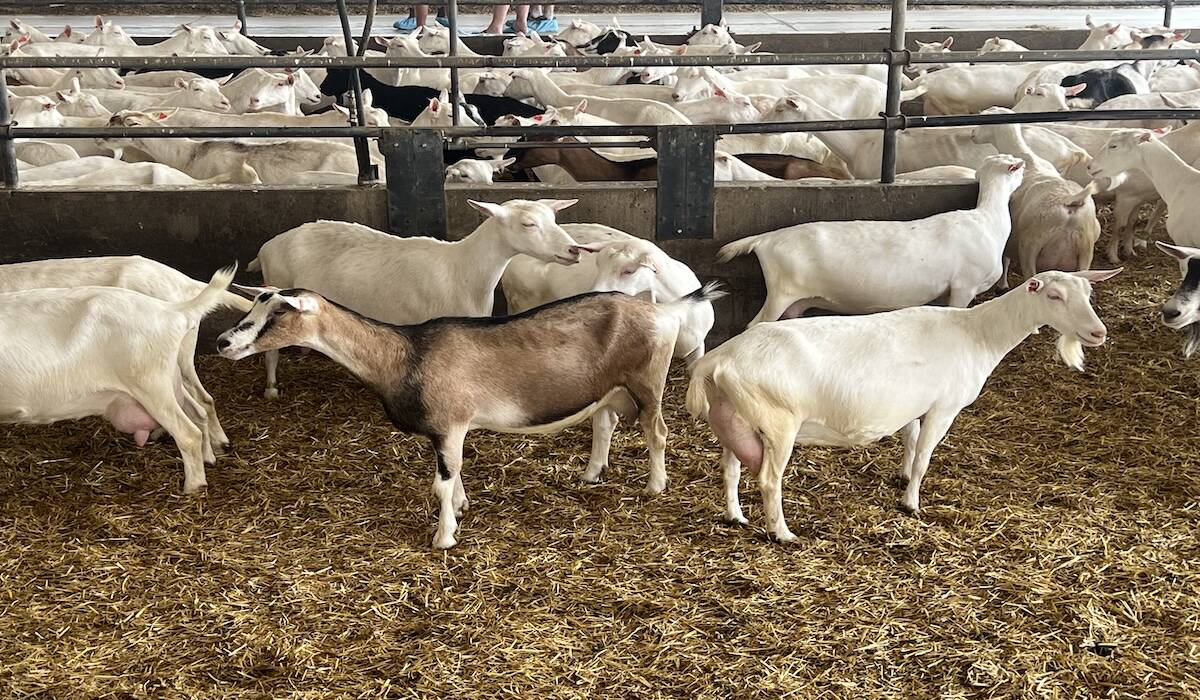
Ontario dairy goat producers move toward forming provincial board
Creation of a Dairy Goat Board under the Ontario Farm Products Marketing Commission may be voted on by early 2026.
Most people know dairy bulls are unpredictable, but they mistakenly believe they are dangerous because of their genetics. It has much more to do with their rearing conditions, said Stookey.
“Most people don’t realize or know. They just assume that dairy bulls are mean. And they’re right, most dairy bulls are mean but they’re mean because of the way we raise them.”
Many dairy bulls are hand-reared in isolation and that contributes significantly to their behaviour toward humans when they become adults.
Studies have shown that rearing conditions are key to creating safe or dangerous bulls.
READ MORE: B.C. ranchers value docility of British White cattle
Dr. Ed Price, a behaviour researcher from the University of California at Davis, has shown that Hereford bull calves bottle-raised in isolation and hand-fed by humans became dangerous to people when they reach adulthood. Their group-raised counterparts acted like normal Hereford bulls, moving away when people approached.
“Most people understand that mature male animals (bulls, rams, stags, stallions) are potentially dangerous, but we often fail to appreciate that the most dangerous males are those that have been bottle-raised. Such males become dangerous because they have imprinted onto people.
“Their behaviour is neither due to how they were treated nor due to their genetics. Bottle-raised males are simply programmed due to their hand-rearing to one day threaten their human rivals,” said Stookey.
Most avian and mammalian neonates are born with a pre-programmed drive to imprint onto their mothers. Imprinting occurs during a critical period early in the animal’s life when it forms attachments and develops a concept of its own species’ identity.
Imprinting provides animals with information about who they are, and for males it determines specifically who they will compete with and even who they will find attractive when they reach sexual maturity.
Imprinting has long-lasting and important biological and psychological effects on adult sexual behaviour and is often irreversible.
“Males imprinted onto another species will compete and some will display or court the surrogate species that raised them,” said Stookey.
“For example, ram lambs raised on nanny goats will fight other billy goats and court and try to breed female goats when they reach sexual maturity and they show very little interest in ewes.
“Fortunately, young females that imprint onto the wrong species are usually not affected. They remain attracted to the courtship displays from males of their own species and because they do not normally compete for breeding privileges, they are not dangerous to humans when they reach sexual maturity.”
Males of most species will imprint onto their surrogate mothers and later in life will direct their sexual behaviours toward the surrogate species. If humans become the surrogate species, it creates a dangerous situation.
“When the male reaches sexual maturity, he will have bouts of male aggression directed against his human competition. In nearly all our livestock and wild species, bottle-raised intact males will show aggression towards humans when they reach sexual maturity.
“There are numerous examples of intact male animals that were wonderful pets as young animals, but grew up to become killers or potential killers of their human caretakers,” said Stookey.
A five-year study in the United States documented 142 human fatalities caused by cattle, many of them from hand-reared bulls.
Stookey recounts a case in which a young producer was killed by his bottle-fed dairy bull.
“I know first-hand of a young dairy producer from my home area who was killed by their dairy bull at the age of 39, while in the prime of his life. His 11-year-old son had the good sense to drive the tractor into the pen to scare off the bull and load his father into the bucket, but it was too late.”
Stookey also knows of a situation in which a family’s bottle-fed pet ram attacked a woman from behind and broke her back.
“There’s more ram lambs than calves that are imprinted on people and they’re dangerous. They don’t know why this one pet got ornerier. They just don’t put the story together about how it became like that,” he said.
Most elk, deer and bison producers understand that males grow up to become dangerous and keep a watchful eye and distance from them.
“That’s one of the things that people in one industry know and people in another industry don’t,” Stookey said.
People occasionally nurture a wild animal as a family pet.
“I grew up where a neighbour had a little fawn that they brought home to their farm. They bottle-raised that little buck and everybody thought it was cute and it walked around their yard.
“And then, in the fall, it went through rut. It was a spiker, and the husband came home and that buck had pinned his wife, pushing against her with his head and it would have killed her.
“He got his gun and killed their pet deer. They didn’t know what they were dealing with,” Stookey said.
So how should dairy bulls be raised to become good herd sires and not people killers?
“The best option is to raise a bull calf on a cow. This will prevent the calf from imprinting onto people.
“If that is not an option, then the next best scenario would be to group-rear bull calves on an automatic milk dispenser or milk bar, so that the calves imprint and socialize with their own species and not imprint onto people,” he said.
“I recommend that you never play with, pet or tame bull calves until post weaning when the imprinting process has long been complete.
“My advice is just castrate orphan males of any species and you’ve circumvented the problem.”
Stookey said producers should get rid of problem animals.
“It’s not worth your life or somebody you love.”
– This article was originally published at The Western Producer.





